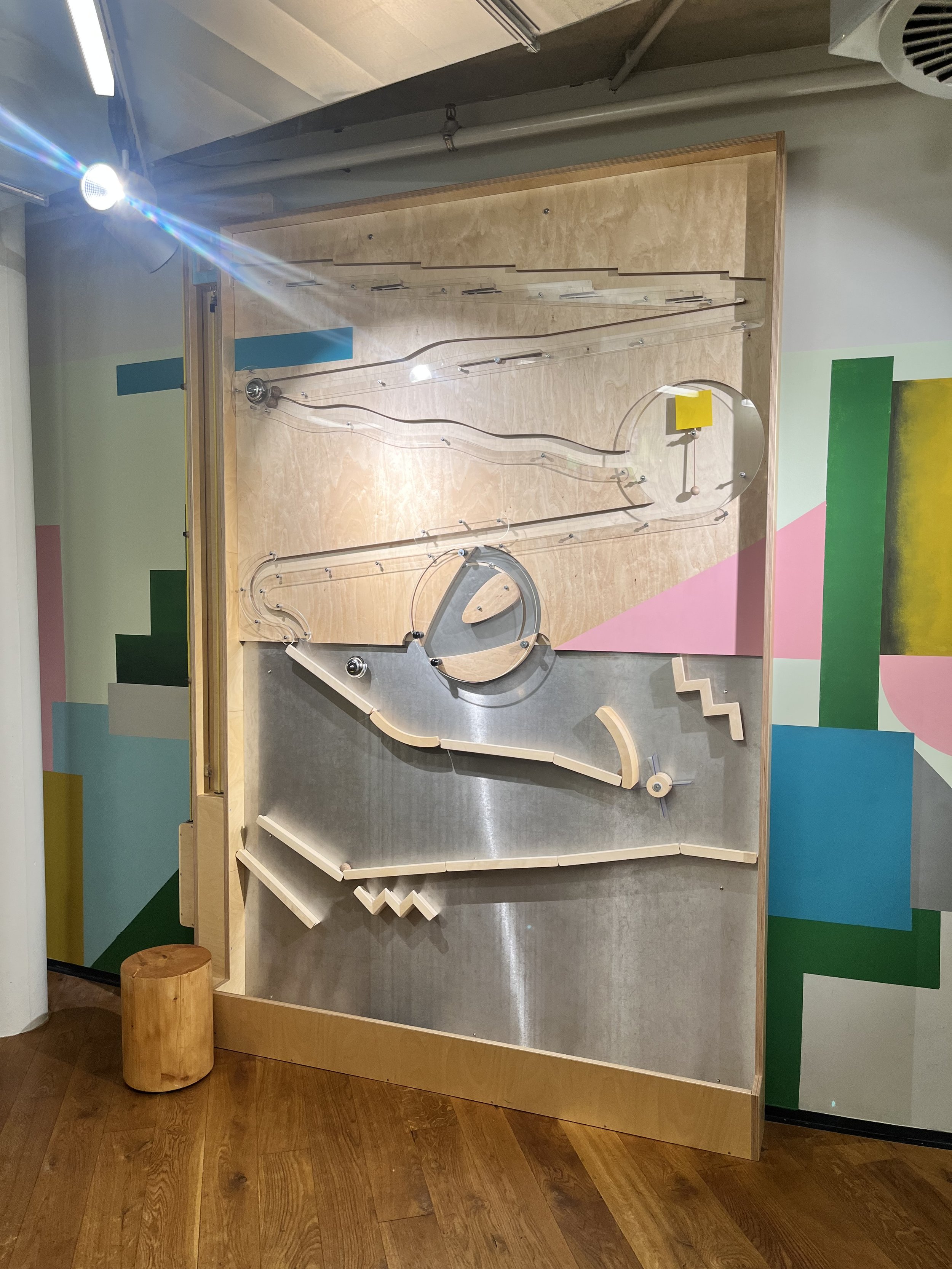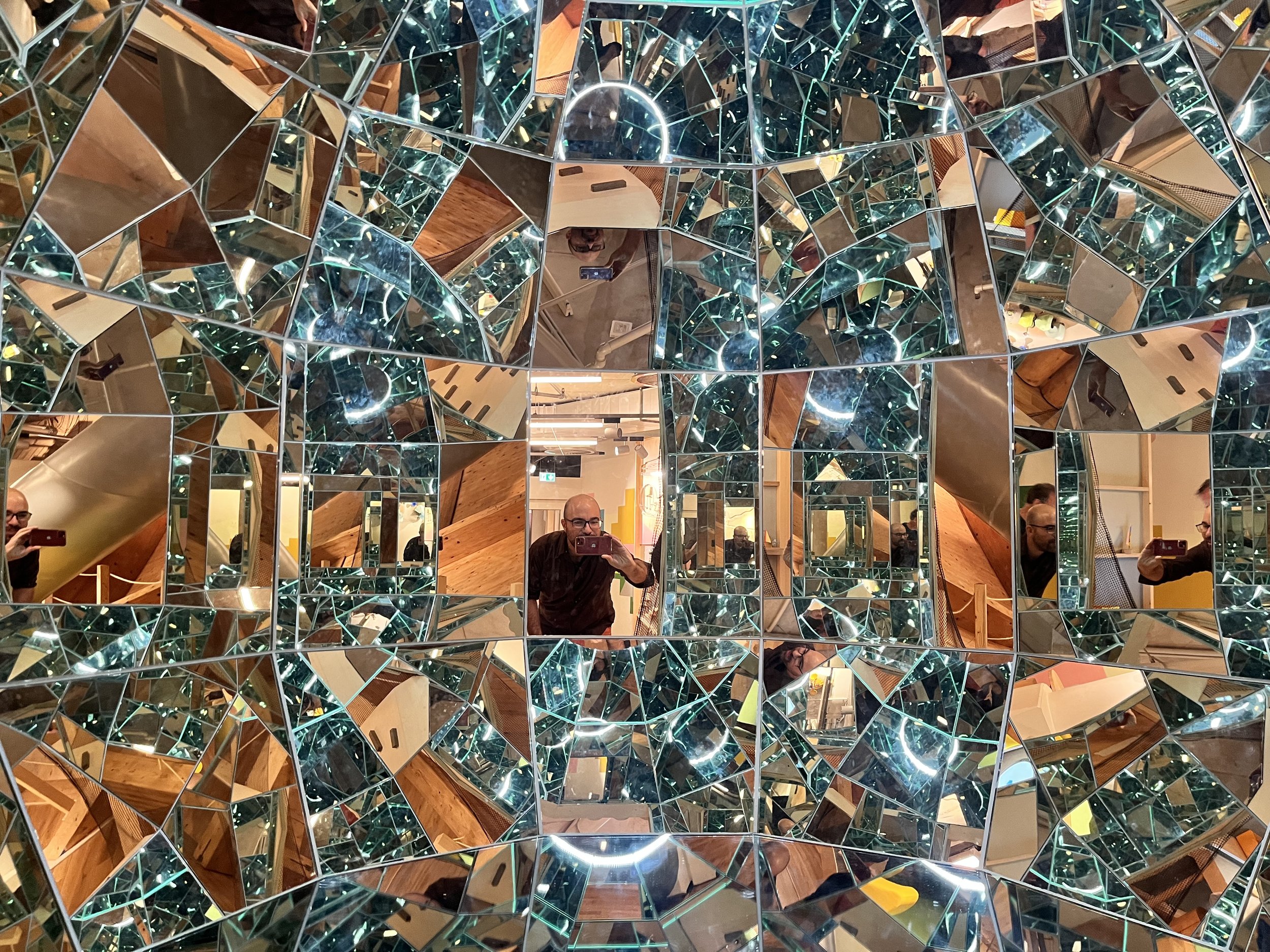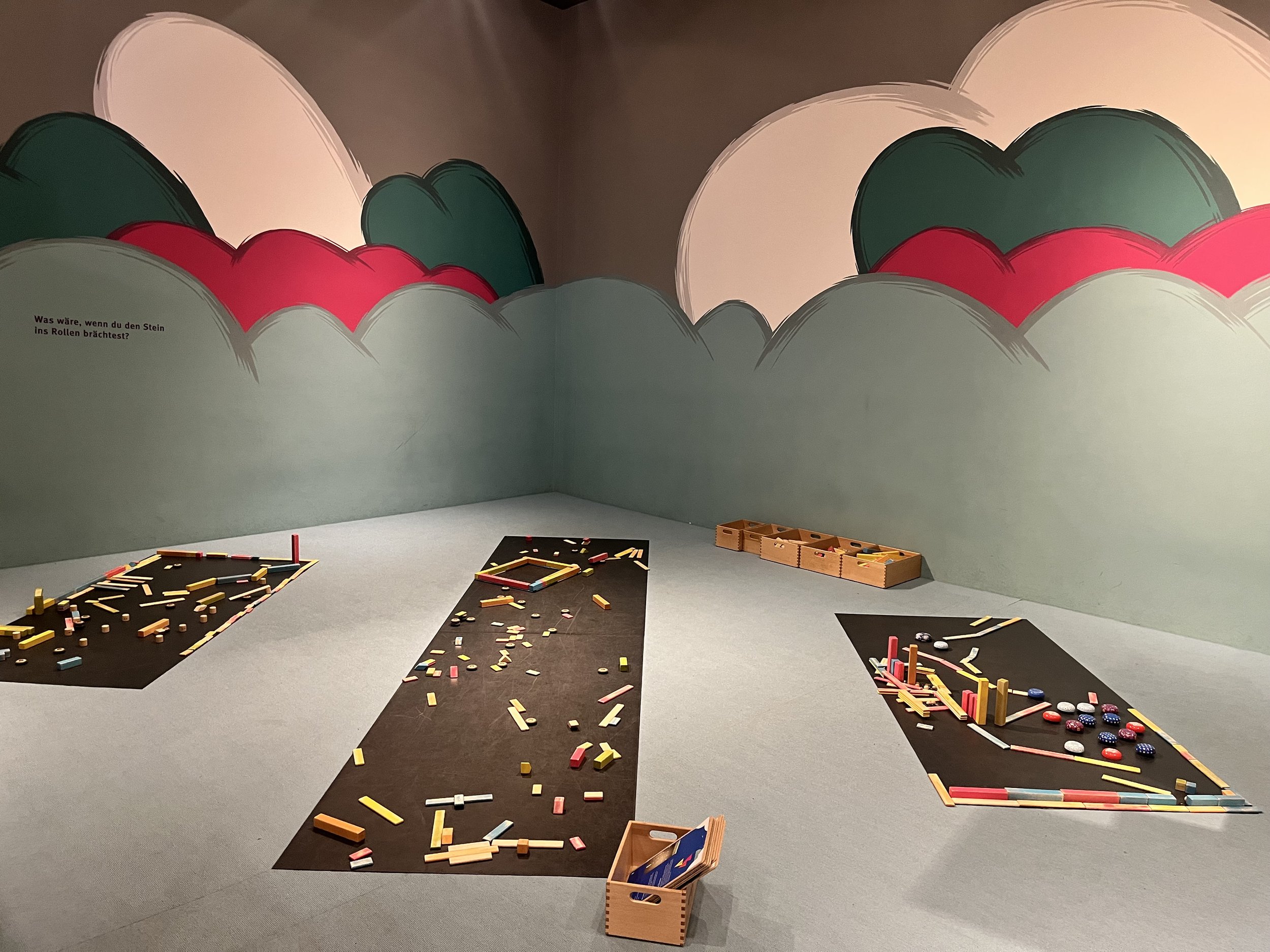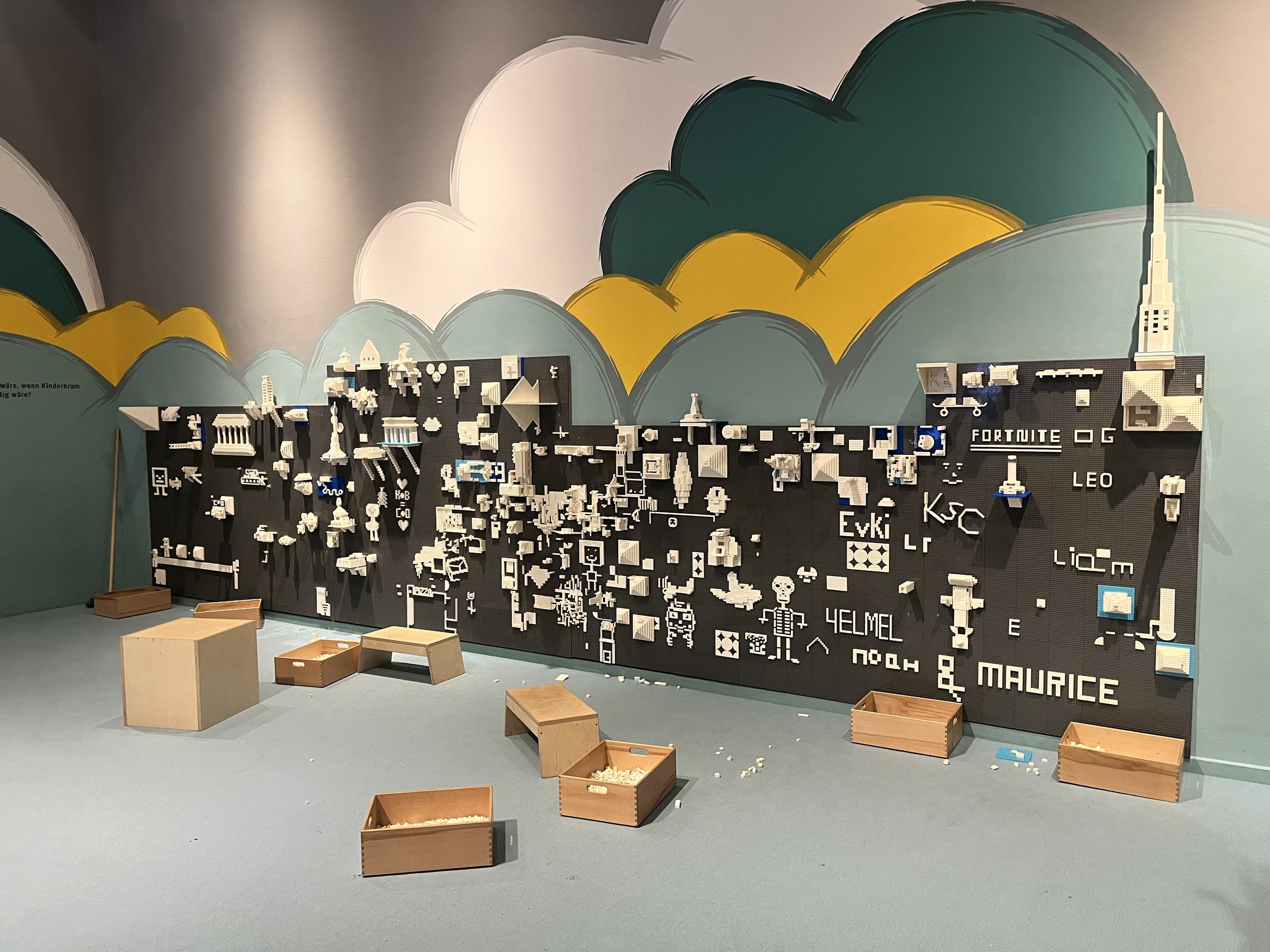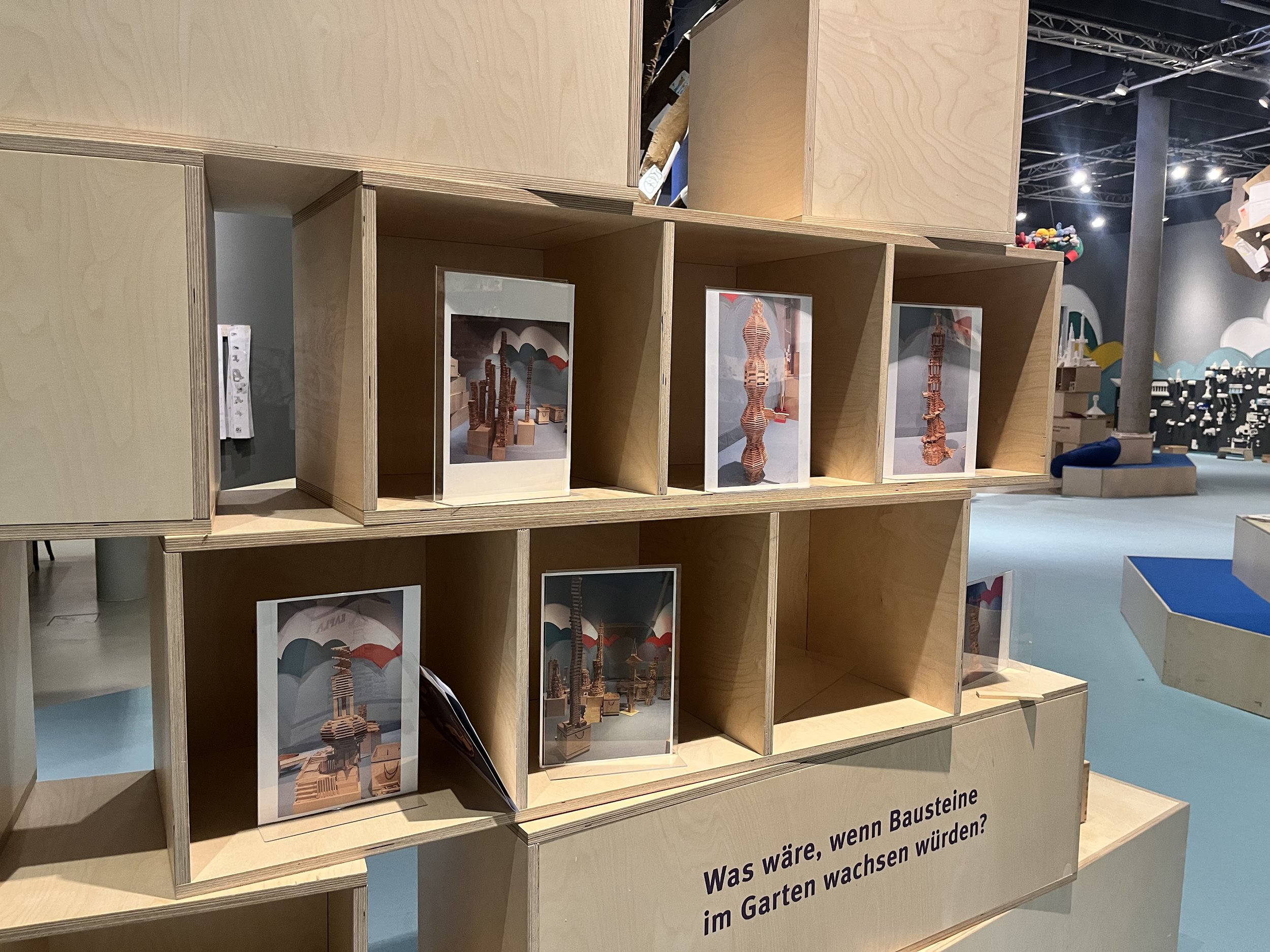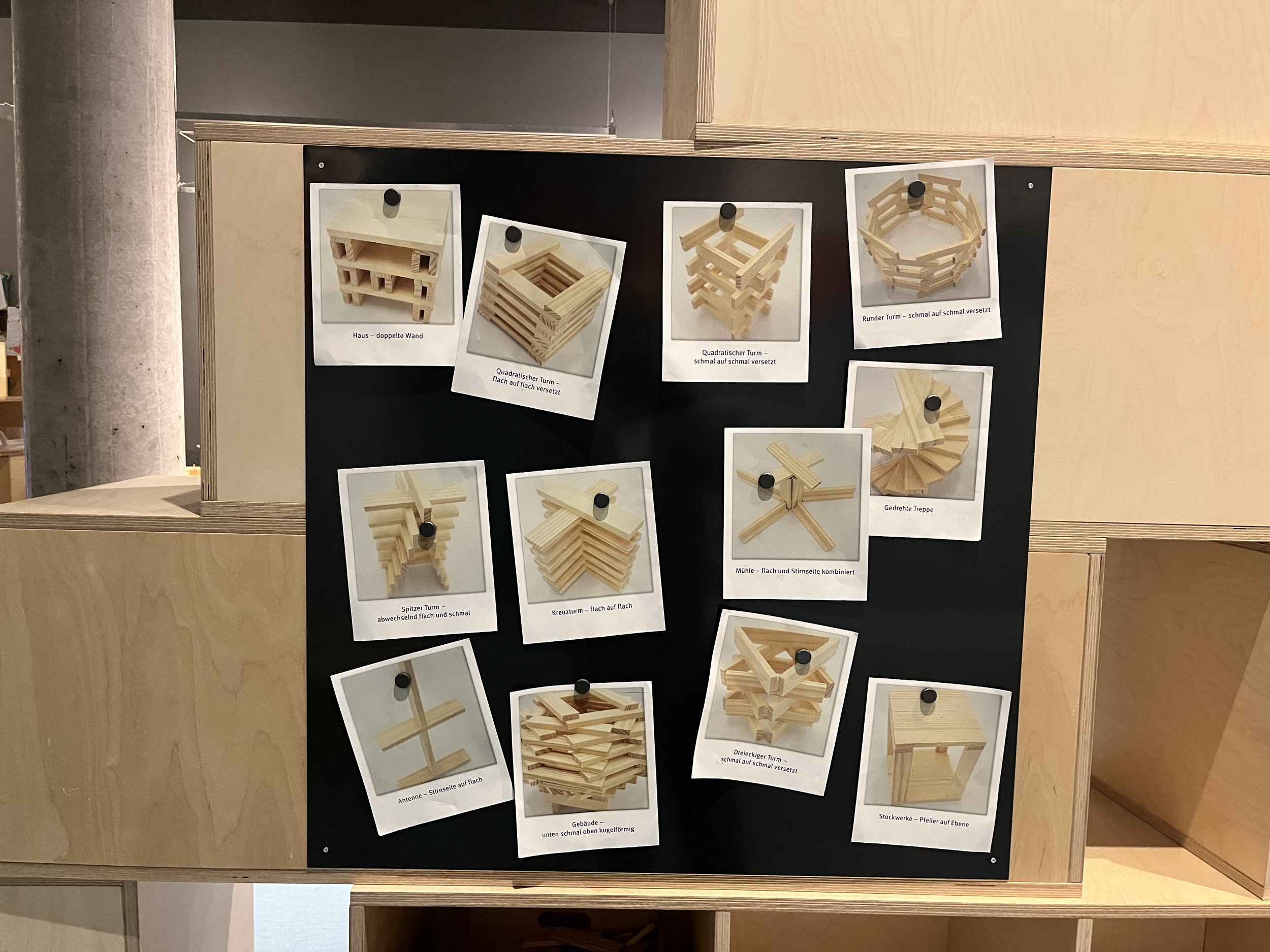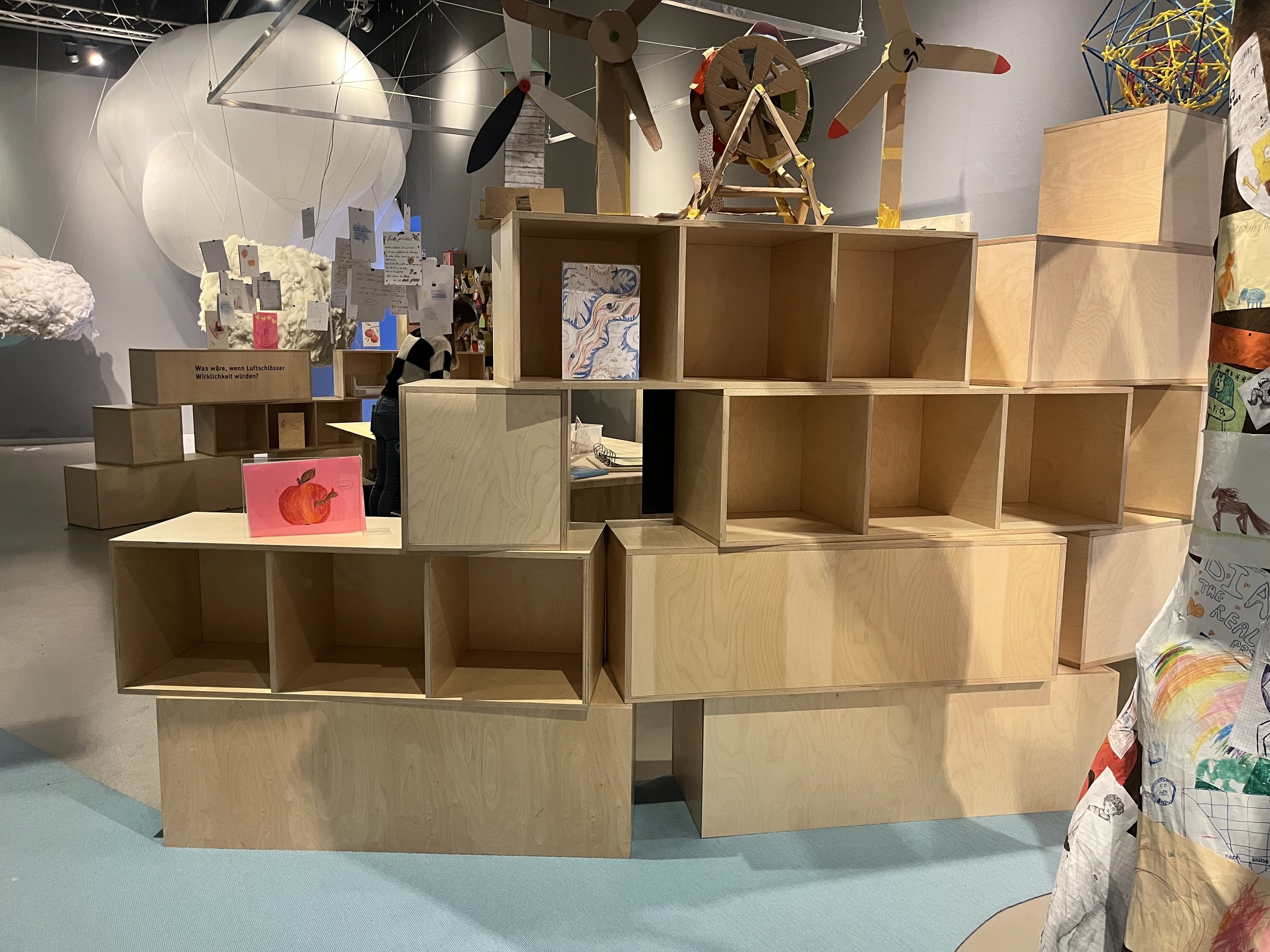Making and Tinkering Exhibitions at Universum
Earlier in November, I led a professional development workshop with the education and exhibit teams at Universum Science Center in Bremen, Germany. We explored light and shadow, tried prototypes of ramps and rollers projects and discussed ideas around learning through tinkering. While on site, I also got the chance to explore two new exhibitions that incorporate elements of making and tinkering.
The first section that I visited, was a gallery for young children called Milchstrasse (Milk Street). It has a nice kaleidoscopic room, magnetic marble walls and a really cool large space where kids build forts out of wooden sculptures, pool noodles, foam shapes and colorful sheets.
There was also a mini remix of Nicole Catrett’s mylar rainbow light box table. We’ve seen many different versions of this exhibit and it was fun to see one especially designed for young children.
And part of the gallery has a corner to explore ramps and rollers, a topic specifically related to one of the current projects that we’ve been prototyping. They inverted a bit our set-up in the Tinkering Studio with the ramp built in the wall and the building table in the center of the space. I think there are still questions about which types of materials to use and how much to put out so it’s great that other science centers are trying this project in different contexts.j
Another place in the museum where making and tinkering has an even bigger spotlight, is a temporary exhibition called Wolkenkuckucksheim (Cloud Cuckoo Land).
In this exhibition there are several construction based projects. Some of the spaces provide large play areas for kits like LEGO, k’nex or KEVA blocks. Others use recycled materials like wire/coffee pods or recycled cardboard to allow visitors to make new creations. And there are a couple of more environmental elements like DIY pinball ramps and a collaborative nail/string sculpture.
One nice thing about the space was that each mini-workshop felt like a little nook where learners were protected from the floor of the science center. It was possible to see what others were doing around the larger gallery but each little space created a frame around an individual activity.
Each of these projects have a low threshold to entry meaning that it was easy to sit down and get started exploring and constructing. The projects didn’t feel intimidating and many were things that visitors could continue exploring at home with easy to find materials. This also made it easier for one or two facilitators to manage the whole space.
As well, I appreciated the variety of different examples and inspirations around the exhibition. There were large cubby holes with pre-build examples, photos of high ceiling ideas and some large scale installations where visitors could add their creations to a collection. I especially liked the cardboard city mounted on a vertical wall which was a really nice way to showcase a large number of creations in a limited space.
These spaces can be hard to keep stocked and relevant by facilitators who have to decide what to keep and what to throw away. It might be possible to have some of these spaces more curated with acrylic covers in the style of cabinet of curiosities.
The exhibition was anchored by four large “trees” created by artists, each covered by objects related to the project themes like cardboard boxes, recycled electronics, stuffed animals and children’s drawings. I liked how they felt real and tangible and the product of a individual artist’s vision rather then a uniform design which might give the impression of a “right way” to make or tinker.
One question that I’ve been thinking about regarding this exhibition is the framing of a set apart gallery for tinkering with a fantastical theme. On one hand, it makes sense because tinkering supports flights of imagination and we want to encourage ideas that we may not expect to “work” in the real world.
But when the tinkering space is thematically removed from the rest of the exhibits we may miss opportunities to connect to scientific concepts. Tinkering is a valid way of learning about STEAM content and can be integrated into the traditional science center gallery. I’m interested in remixing exhibits with tinkering materials, placing opportunities for learner centered projects near more traditional exhibits and blurring the lines between topics.
Overall, it was great to see these two galleries that highlight making and tinkering. I’m excited that open-ended construction and learner driven explorations are becoming a bigger and bigger part of science center offerings. I’m looking forward to continue to collaborate with Universum as they prototype and test new ideas with visitors!
